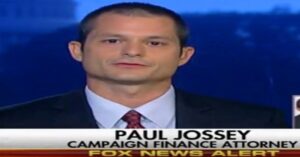Stablecoins are not crashing
A rare real-life test case emerged recently that allowed observers to contrast government warnings with real world events. Reigning in the crypto markets has become a key priority for Biden administration financial regulators. In March the president signed an executive order seeking “responsible development” of crypto innovation. Last November, a President’s Working Group (PWG) composed of financial regulators released a report warning of dire consequences if a crypto subset known as stablecoins weren’t soon placed under a federal regulatory umbrella. (Stablecoins are digital assets pegged to a stable monetary value, usually the U.S. dollar.).
PWG Predicts Stablecoin Crash
The report came laden with doom and gloom or FUD in crypto speak (Fear Uncertainty and Doubt). One PWG concern was that a stablecoin failure could spark a “run” and a general economic calamity:
Failure of a stablecoin to perform according to expectations would harm users of that stablecoin and could pose systemic risk. The mere prospect of a stablecoin not performing as expected could result in a “run” on that stablecoin – i.e., a self-reinforcing cycle of redemptions and fire sales of reserve assets. Fire sales of reserve assets could disrupt critical funding markets, depending on the type and volume of reserve assets involved. Runs could spread contagiously from one stablecoin to another, or to other types of financial institutions that are believed to have a similar risk profile. Risks to the broader financial system could rapidly increase as well, especially in the absence of prudential standards.
In a recent speech, Securities and Exchange Commission (SEC) Chairman Gary Gensler, a PWG member echoed these concerns. “[S]tablecoins are so integral to the crypto ecosystem that a loss of the peg or a failure of the issuer could imperil one or more trading platforms, and may reverberate across the wider crypto ecosystem.”
Threat Stablecoins Could Crash Opens Door to Regulation
The risks were supposedly so dire, that if Congress demurred, the PWG requested the Financial Stability Oversight Council—an artifact of the Dodd-Frank law—impose regulatory authority sua sponte without input from elected representatives.
As fate would have it, the market produced a test case for the government’s warnings. When stablecoin TerraUSD (UST) spectacularly crashed in May taking down crypto token Terra and $40 billion in the process, all the government’s fears seemed to be coming to fruition.
That UST was an unbacked “algorithmic” stablecoin—a type unaddressed by the PWG report—instead of an asset-backed stablecoin did not seem to matter. Treasury Secretary Janet Yellen testified “[w]e’ve had a real-life demonstration of the risks,” that required the PWG’s suggested “comprehensive framework” to eliminate “gaps in the regulation.”
Asset-Backed Stablecoins are not Crashing
But a funny thing happened on the way to economic collapse: Nothing. Tether, the largest stablecoin did briefly de-peg to 95 cents. And it lost $10 billion in volume as some rushed to convert their Tether dollars into fiat dollars. But amidst the chaos, Tether tweeted reassurance anyone that wished to convert could.
Crisis over. The biggest asset-backed stablecoins all attest to the integrity of their reserves. Today the stablecoin market stands at $159 billion with none in danger.
Academics, journalists, and policy makers will study the Terra ecosystem collapse in the months and years ahead. Clearly, no one has ‘cracked the code’ for sustaining an algorithmic stablecoin under severe market stress.
But that is a market issue not a government issue. A comprehensive federal framework will inhibit not help stablecoin stability.
By Jossey PLLC
This post originally appeared on the blog of the Competitive Enterprise Institute, https://cei.org/blog/the-stablecoin-contagion-that-wasnt/








